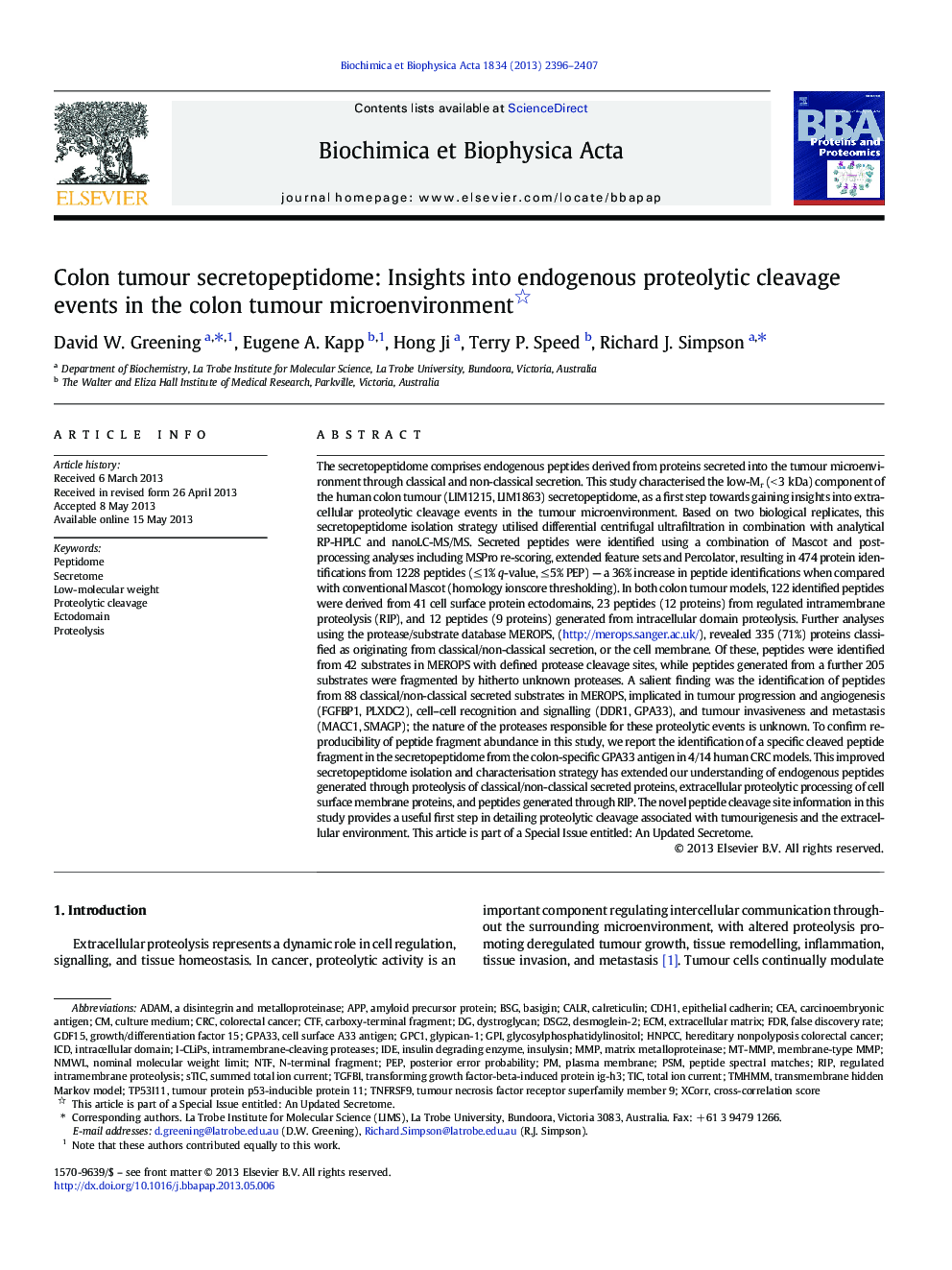| کد مقاله | کد نشریه | سال انتشار | مقاله انگلیسی | نسخه تمام متن |
|---|---|---|---|---|
| 1178472 | 962694 | 2013 | 12 صفحه PDF | دانلود رایگان |

• Characterise the low-Mr (< 3kDa) component of the colon tumour secretopeptidome
• Insights into extracellular endogenous proteolysis in the tumour microenvironment
• Novel separation and analysis strategy: peptide-centric post-processing analyses
• A promising new approach for finding circulating markers of colon cancer
The secretopeptidome comprises endogenous peptides derived from proteins secreted into the tumour microenvironment through classical and non-classical secretion. This study characterised the low-Mr (< 3 kDa) component of the human colon tumour (LIM1215, LIM1863) secretopeptidome, as a first step towards gaining insights into extracellular proteolytic cleavage events in the tumour microenvironment. Based on two biological replicates, this secretopeptidome isolation strategy utilised differential centrifugal ultrafiltration in combination with analytical RP-HPLC and nanoLC-MS/MS. Secreted peptides were identified using a combination of Mascot and post-processing analyses including MSPro re-scoring, extended feature sets and Percolator, resulting in 474 protein identifications from 1228 peptides (≤ 1% q-value, ≤ 5% PEP) — a 36% increase in peptide identifications when compared with conventional Mascot (homology ionscore thresholding). In both colon tumour models, 122 identified peptides were derived from 41 cell surface protein ectodomains, 23 peptides (12 proteins) from regulated intramembrane proteolysis (RIP), and 12 peptides (9 proteins) generated from intracellular domain proteolysis. Further analyses using the protease/substrate database MEROPS, (http://merops.sanger.ac.uk/), revealed 335 (71%) proteins classified as originating from classical/non-classical secretion, or the cell membrane. Of these, peptides were identified from 42 substrates in MEROPS with defined protease cleavage sites, while peptides generated from a further 205 substrates were fragmented by hitherto unknown proteases. A salient finding was the identification of peptides from 88 classical/non-classical secreted substrates in MEROPS, implicated in tumour progression and angiogenesis (FGFBP1, PLXDC2), cell–cell recognition and signalling (DDR1, GPA33), and tumour invasiveness and metastasis (MACC1, SMAGP); the nature of the proteases responsible for these proteolytic events is unknown. To confirm reproducibility of peptide fragment abundance in this study, we report the identification of a specific cleaved peptide fragment in the secretopeptidome from the colon-specific GPA33 antigen in 4/14 human CRC models. This improved secretopeptidome isolation and characterisation strategy has extended our understanding of endogenous peptides generated through proteolysis of classical/non-classical secreted proteins, extracellular proteolytic processing of cell surface membrane proteins, and peptides generated through RIP. The novel peptide cleavage site information in this study provides a useful first step in detailing proteolytic cleavage associated with tumourigenesis and the extracellular environment. This article is part of a Special Issue entitled: An Updated Secretome.
Journal: Biochimica et Biophysica Acta (BBA) - Proteins and Proteomics - Volume 1834, Issue 11, November 2013, Pages 2396–2407